Kara Walker’s art draws its power from her unconventional fusion of vintage Antebellum aesthetics with emotionally and politically charged imagery. In her skillful recreation of the genteel parlor style of scenic cameo silhouettes, she evokes a whimsical, even nostalgic decorative sensibility—only to employ that visual language to convey the profoundly unsettling symbolism that carries recovered histories and their insufficiently addressed legacies. Despite the antiquity of the idiom, the confrontation is very much about the present day. Ultimately, the black-and-white world that Walker conjures is anything but.
A newly opened exhibition at the USC Fisher Museum of Art, Kara Walker: Cut to the Quick: Works from the Collections of Jordan D. Schnitzer and His Family Foundation, explores the several decades of Walker’s career, through more than 80 works made between 1994 and 2019. But instead of the attention-grabbing sculptures and architectural installations that have earned Walker well-deserved international acclaim, this unique exhibition primarily examines her career through the lens of her robust printmaking, drawing, and editioned sculpture practices.
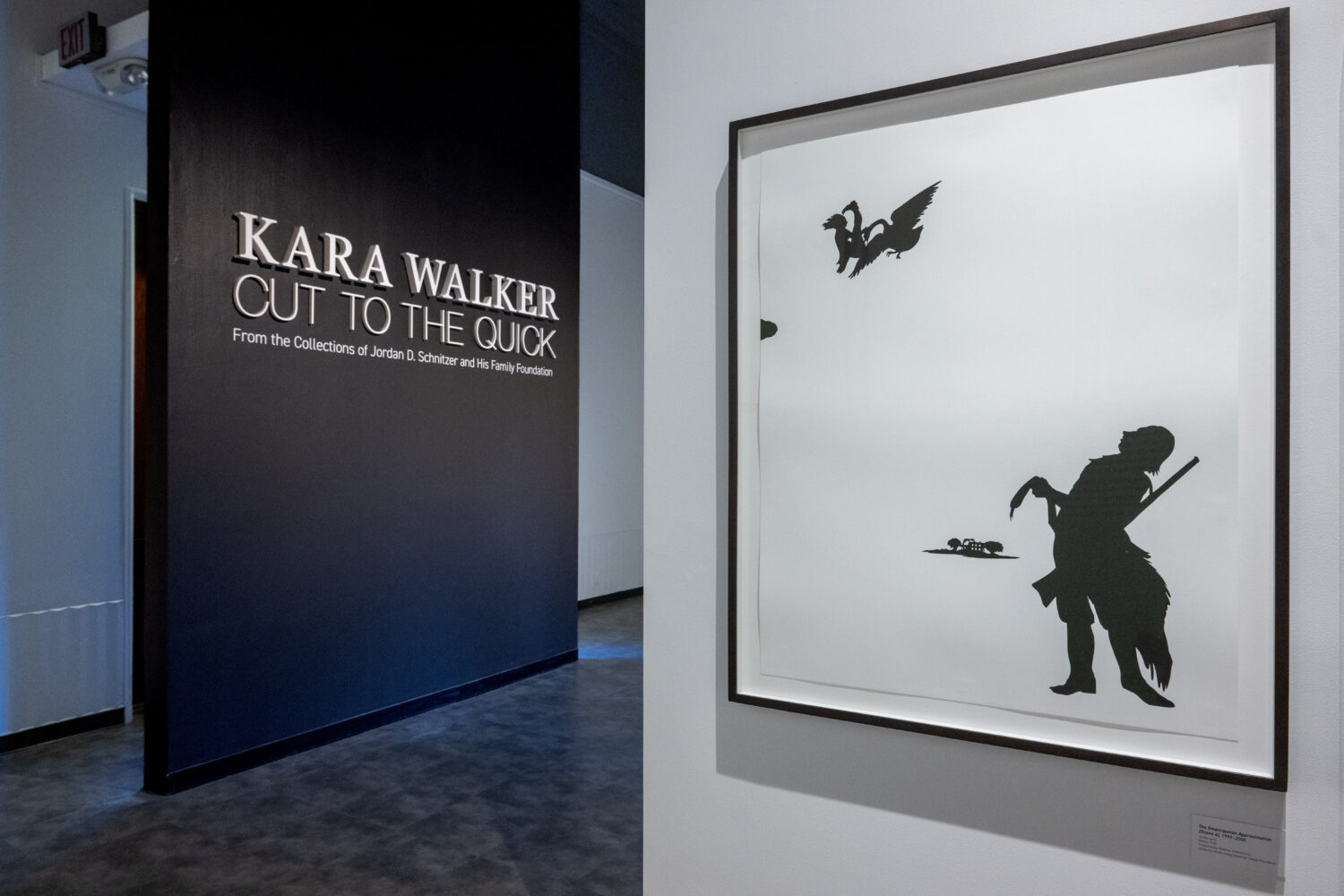
Installation view, Kara Walker: Cut to the Quick, From the Collections of Jordan D. Schnitzer and His Family Foundation, 2023, USC Fisher Museum of Art. (Photo: Dal Perry, Courtesy of Jordan Schnitzer Family Foundation)
This makes perfect sense, as the Jordan Schnitzer Family Foundation’s collection is the country’s largest holdings of prints and works on paper—and Jordan himself is known for a bit of an obsessive streak that prompts him to favor complete portfolios. He bought his first Kara Walker piece in 1997 (The Keys to the Coop, a limited edition print which is in the exhibition). Since then he’s acquired a further 125 works, always with set completeness in mind. For example, the exhibition proudly shows off the complete Porgy & Bess libretto series, as well as all 27 of the innovative suite of black, white, gray prints from Emancipation Approximation (1999-2000).
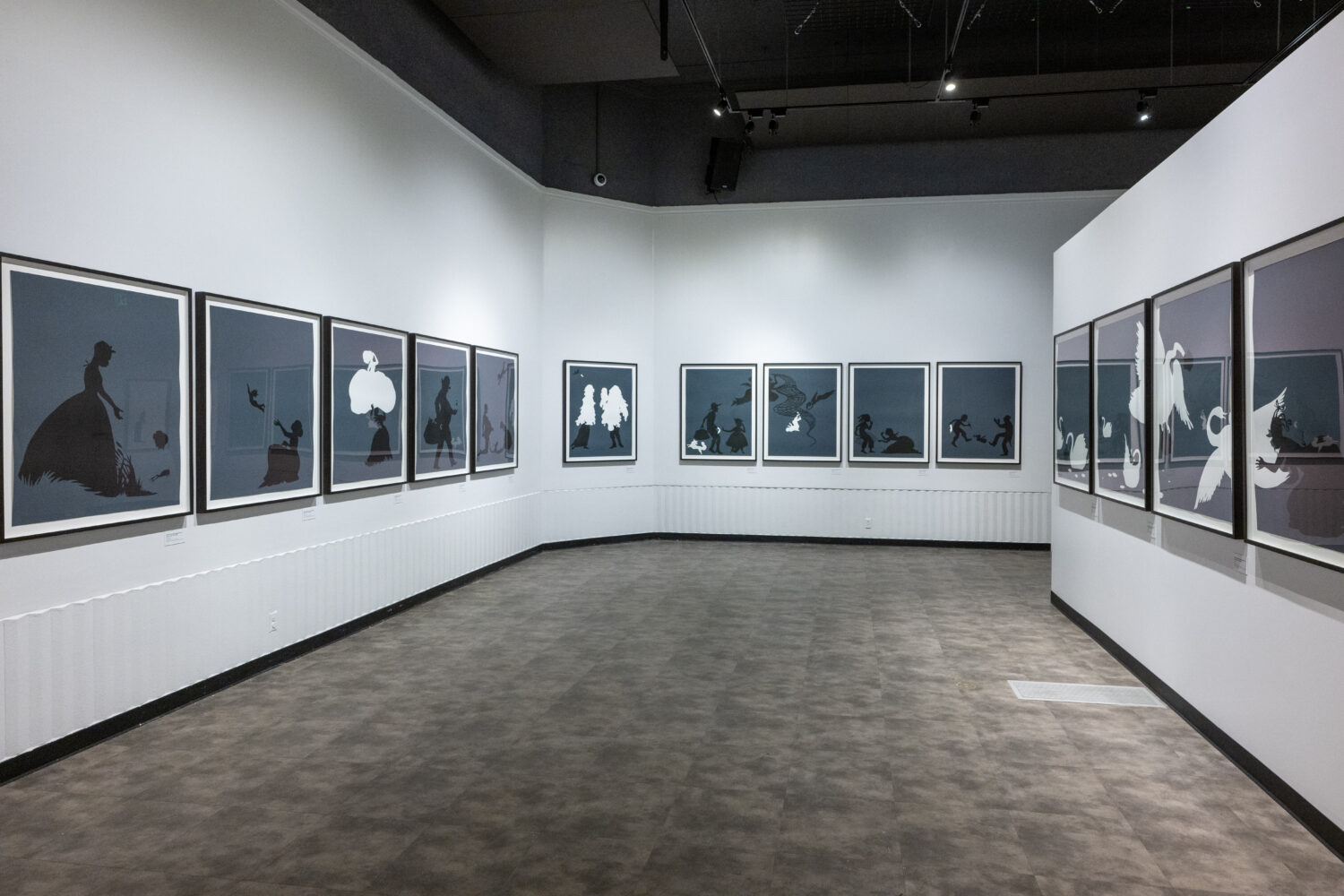
Installation view, Kara Walker: Cut to the Quick, From the Collections of Jordan D. Schnitzer and His Family Foundation, 2023, USC Fisher Museum of Art. (Photo: Dal Perry, Courtesy of Jordan Schnitzer Family Foundation)
Walker’s process involves extensive research in history, literature, art history, and popular culture—all of her work is built on a foundation of storytelling. However the sensoria of immersive or monumental works can often land the viewer’s focus in the aspects of symbolism and emotional effect—whereas the super power of a print series, especially a complete collection, is the unfolding of serial narratives. This is a much more literary voice, akin to a book, allowing for multiple avenues and entry points into the world of the artist’s thoughts. There’s room for nuance and contradiction, cognitive dissonance and frictions of recurrence. Walker has often mentioned her literary influences along with the research-based visual culture she taps into. This exhibition demonstrates, among other things, that in printmaking, she doesn’t merely find a means of reproduction but a fully developed medium with its own distinct attributes that advance her artistic project.
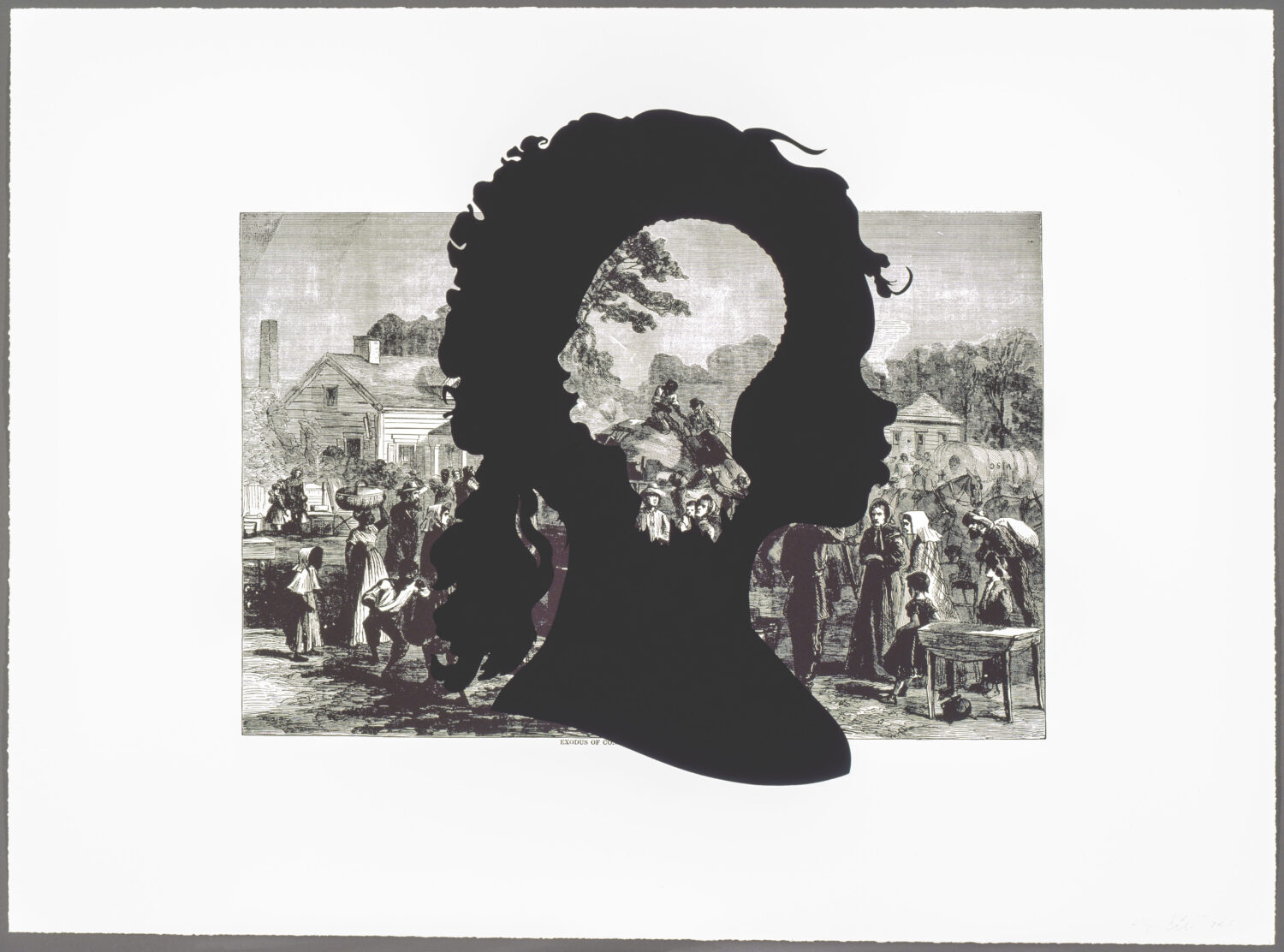
Kara Walker: Harper’s Pictorial History of the Civil War (Annotated): Exodus of Confederates from Atlanta, edition 21/35, 2005, offset lithography and screenprint, 39 x 53 in. (Collection of Jordan D. Schnitzer. Image: Strode Photographic)
In Walker’s hands, the prints and multiples mediums represent a strong marriage of idea and form, in an expanded field of distilled tropes, fixed narratives, and recontextualized symbolism that can be by turns legible and mysterious, beautiful and uncomfortable, poetic and enraging. For example, Harper’s Pictorial History of the Civil War (Annotated), 2005, is a portfolio in which her work is superimposed onto pages from a predictably stereotyped and one-sided account of war and Reconstruction. By building upon a literal foundation of archival printed pages and all the language they contained, she creates a crystal-clear visual dynamic with a revised perspective on history, challenging the biases of past discourse, with a conceptual and physical framework that is once again an ideal job for printmaking.
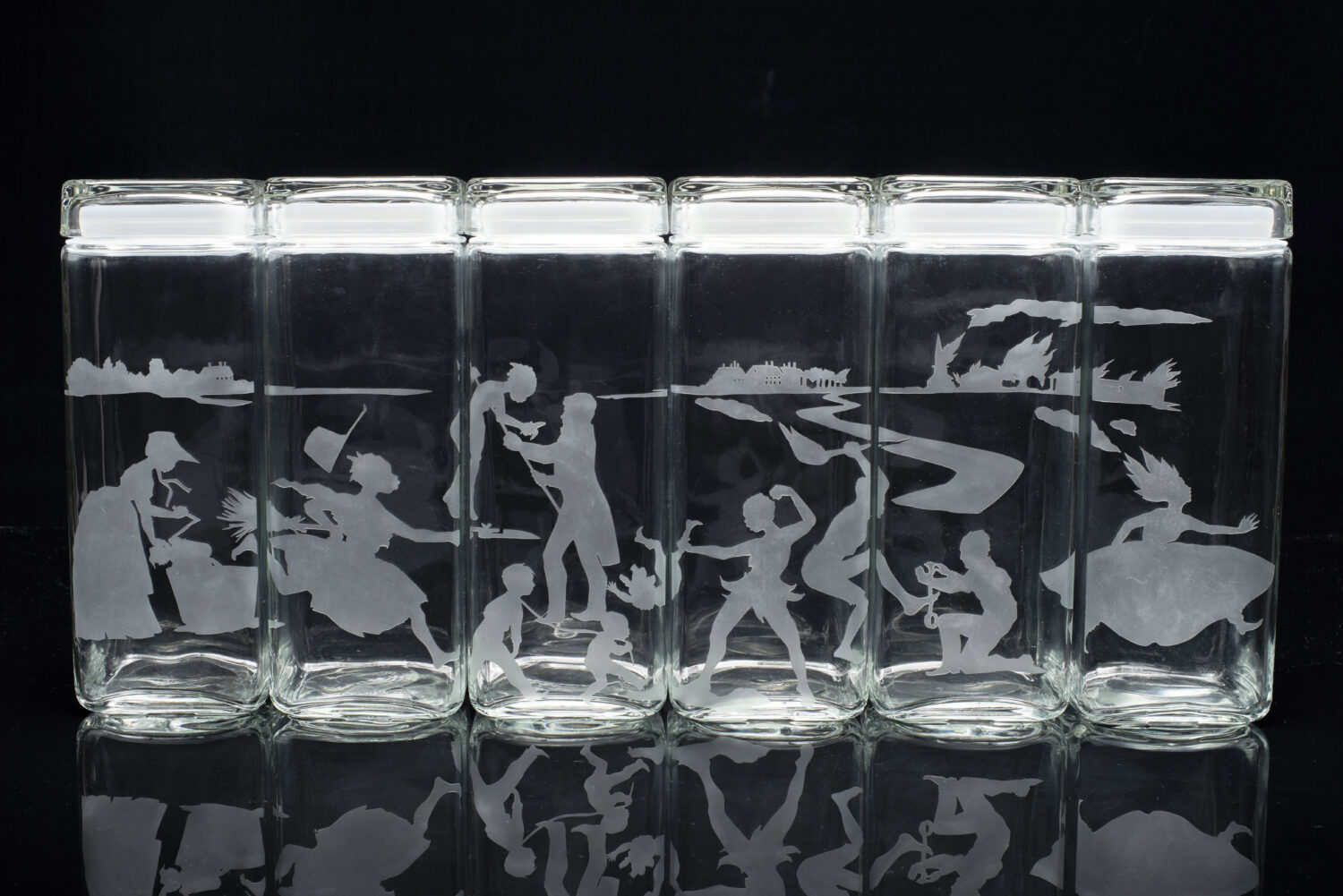
Kara Walker: Canisters, edition of 100, 1997, glass, 11 1/2 x 4 x 4 in. (Collection of Jordan D. Schnitzer. Image: Aaron Wessling Photography)
The Fisher’s installation also includes 2-D and 3-D sculptures and shadow-puppet videos (which make sense because they are made out of drawings). Laser-cut steel works bring the silhouette paper cut-outs off the wall and into the viewer’s physical space, providing a heightened sense of intimacy and whimsy that starkly contrasts with the horrid episodes depicted in the large-scale works. If Walker’s printmaking is conversation with art history, these pieces appeal more directly to the senses, in dialogue with elements of play, domesticity, public space, cinema, spectacle, and even the weird world of problematic collectibles.
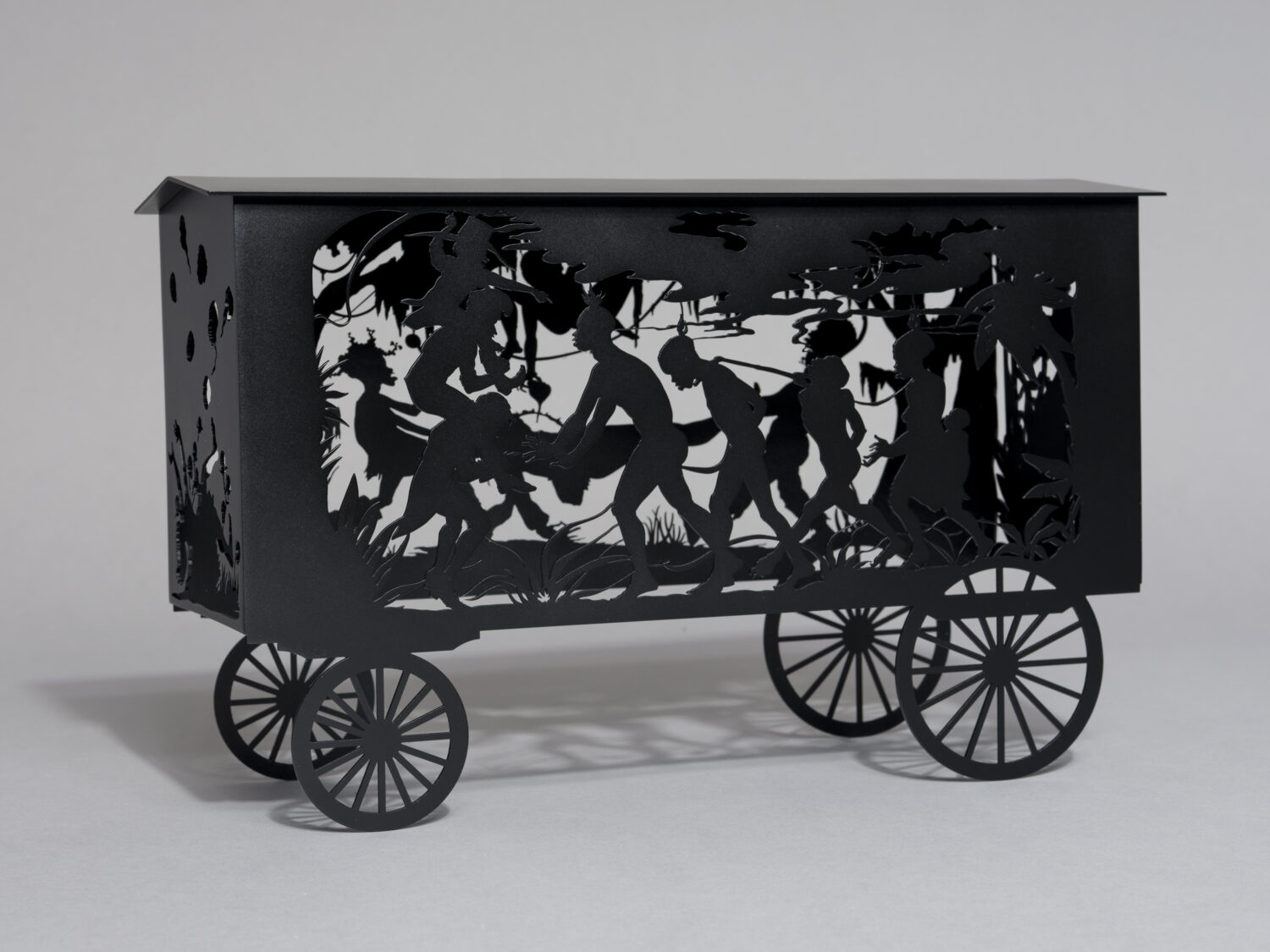
Kara Walker: The Katastwóf Karavan (maquette), edition 29/30, 2017, painted stainless steel, 9 1/8 x 14 5/8 x 5 1/2 in. (Collection of Jordan D. Schnitzer. Image: Aaron Wessling Photography)
Originally co-curated by Frist Art Museum executive director and CEO Dr. Susan H. Edwards and Nashville poet Ciona Rouse, the exhibition debuted at the Frist Museum in Nashville and traveled to the Cincinnati Art Museum, MOCA Jacksonville, and Virginia MOCA en route to its concluding stop at the Fisher. Each location would naturally have impactful involvement from its own staff and community, but at an educational institution like USC, the opportunity for a literal teachable moment was too good to pass up.
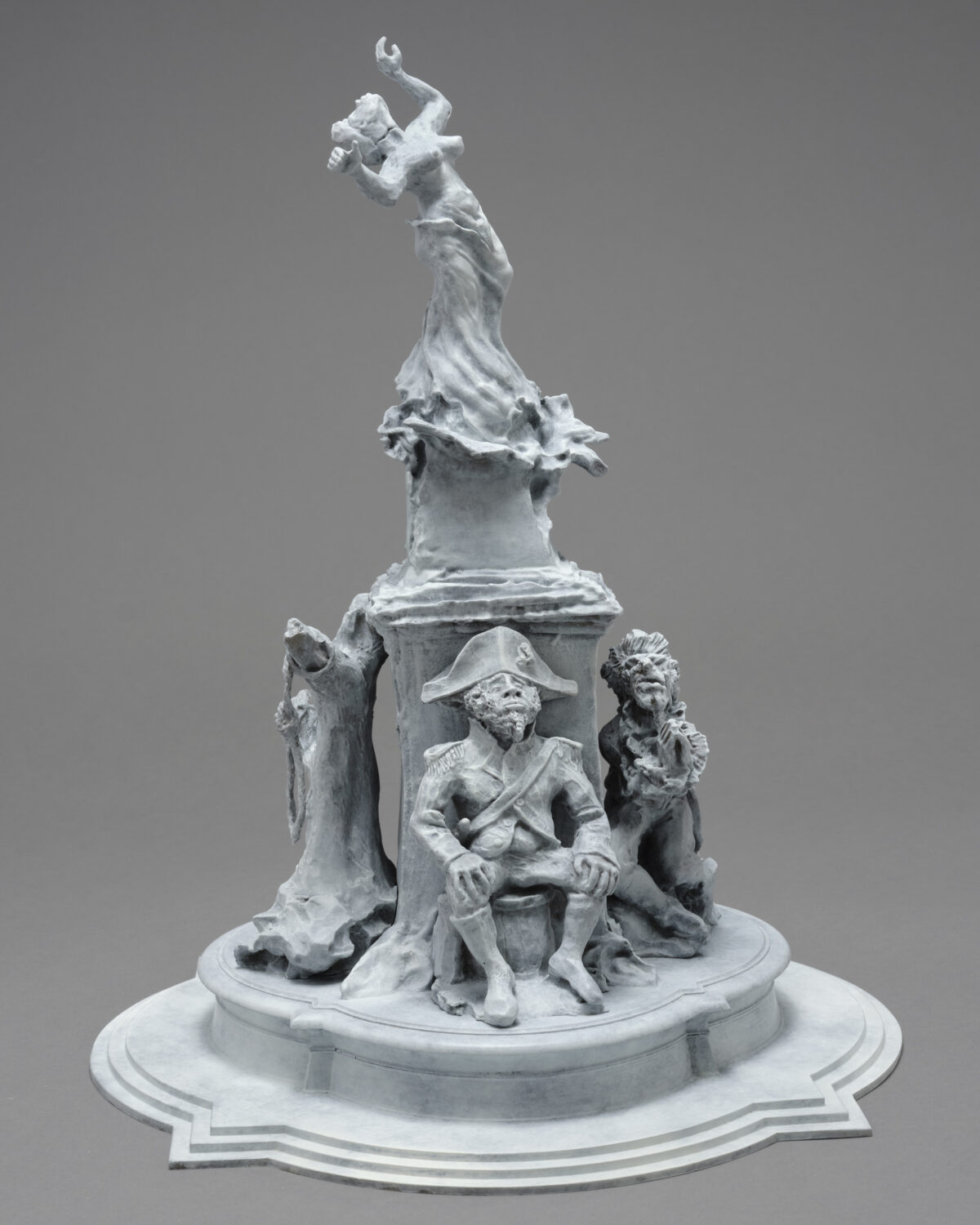
Kara Walker: Fons Americanus, edition 9/30, 2019, bronze, 20 x 16 x 16 in. (Collection of Jordan D. Schnitzer. Image: Aaron Wessling Photography)
Using the occasion as a launchpad for an interdisciplinary augmentation special to USC, three student curators from the extended campus community were invited to play key roles in the curatorial process. The impressive young women were Daijah Williams, Curatorial and Collections Getty Marrow Intern; Kymia Freeman, Student curator specifically tasked with writing exhibition text; and Amaya Nakpodia, who created the Reflection Room alongside Daijah Williams, and also contributed to the exhibition text.
The Reflection Room is a space connected to one of the main exhibition galleries, offering further resources from Walker’s own research processes, as well as a safe, soothing, nurturing environment of quiet contemplation or respite, if they require it, from the work’s unflinching tales of violence and racism. Beauty in Walker’s work is a visual strategy to deliver horrific information, cognitive dissonance is the point. It’s upsetting, meant to be so, and it’s perfectly okay to take a moment to process.
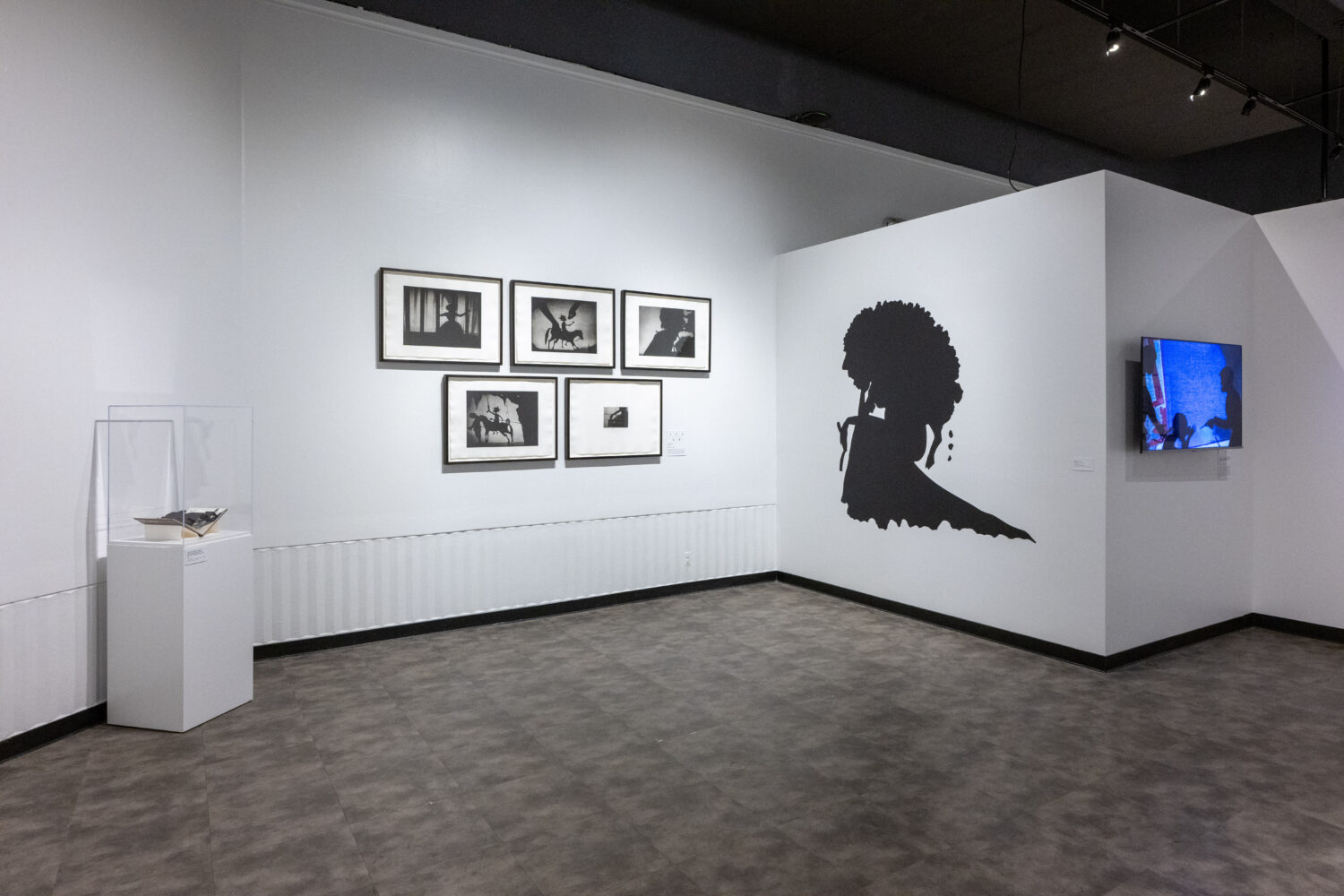
Installation view, Kara Walker: Cut to the Quick, From the Collections of Jordan D. Schnitzer and His Family Foundation, 2023, USC Fisher Museum of Art. (Photo: Dal Perry, Courtesy of Jordan Schnitzer Family Foundation)
In honor of this dual spirit of the work, exhibition programs include a shadow-puppet workshop inspired by the fascinating handmade films on view, as well as a pointed conversation, Let’s Talk about George Floyd: Systemic Racism in the U.S. Today, between Toluse Olorunnipa, a Pulitzer Prize-winning reporter for The Washington Post, Brittany Friedman, Assistant Professor of Sociology at USC, and Jody David Armour, Crocker Professor of Law at USC — moderated by Kymia Freeman, a Public Relations student at USC Annenberg. Also in the spirit of the exhibition’s spirit of community, a Q&A and reception with music, food, and an interactive mural will follow the conversation—because there’s nothing more important, to both Walker and to Schnitzer, than art’s power to educate and amplify the story of America.
The exhibition is on view at 823 W. Exposition Blvd., downtown, through December 9, free. For more information visit: fisher.usc.edu.
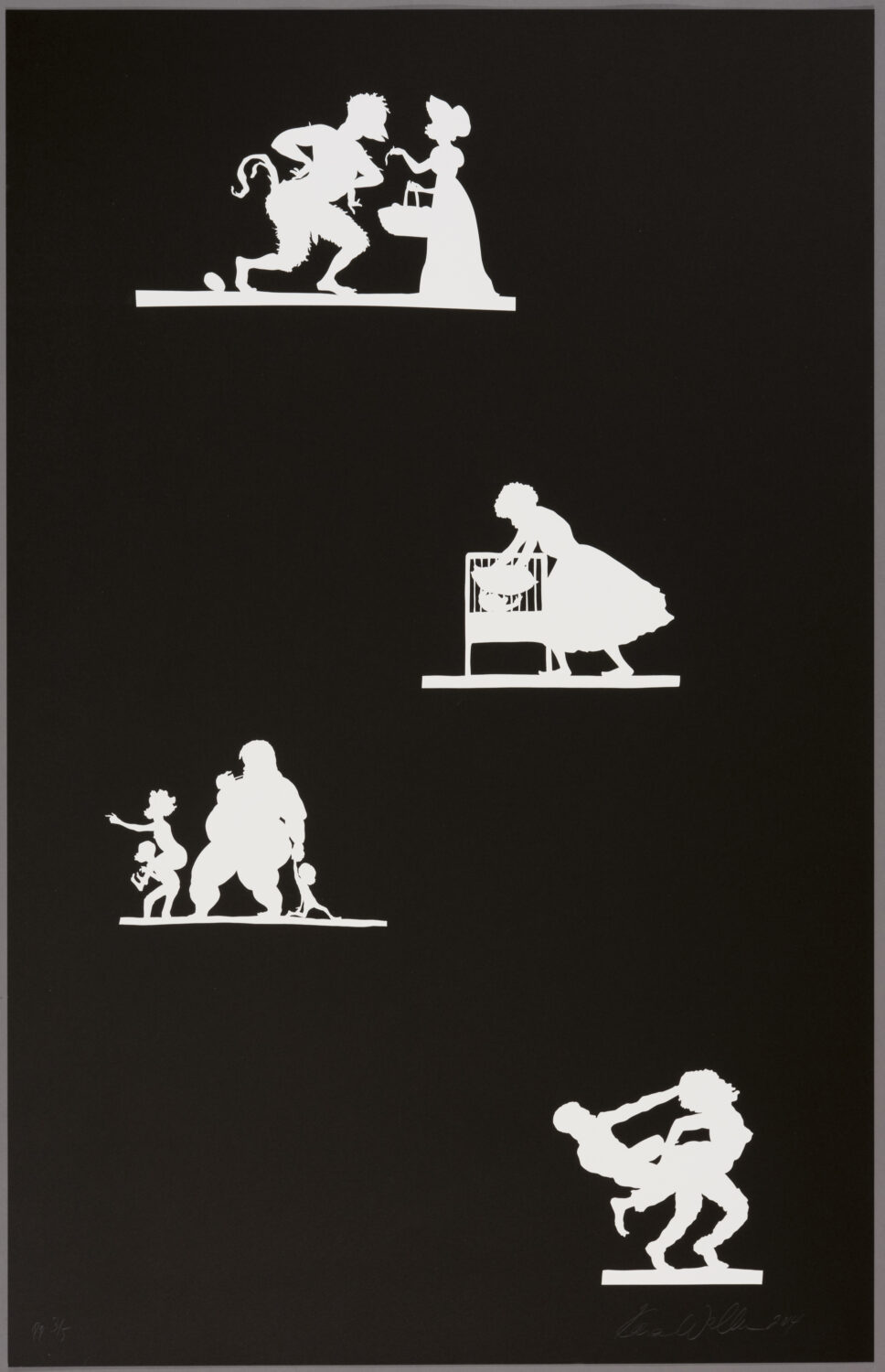
Kara Walker: Excerpt, edition PP 3/5, 2014, lithograph, 37 7/8 x 24 1/4 in. (Collection of Jordan D. Schnitzer. Image: Aaron Wessling Photography)
/Editor’s note: The disclaimer below refers to advertising posts and does not apply to this or any other editorial stories.
Advertising disclosure: We may receive compensation for some of the links in our stories. Thank you for supporting LA Weekly and our advertisers.